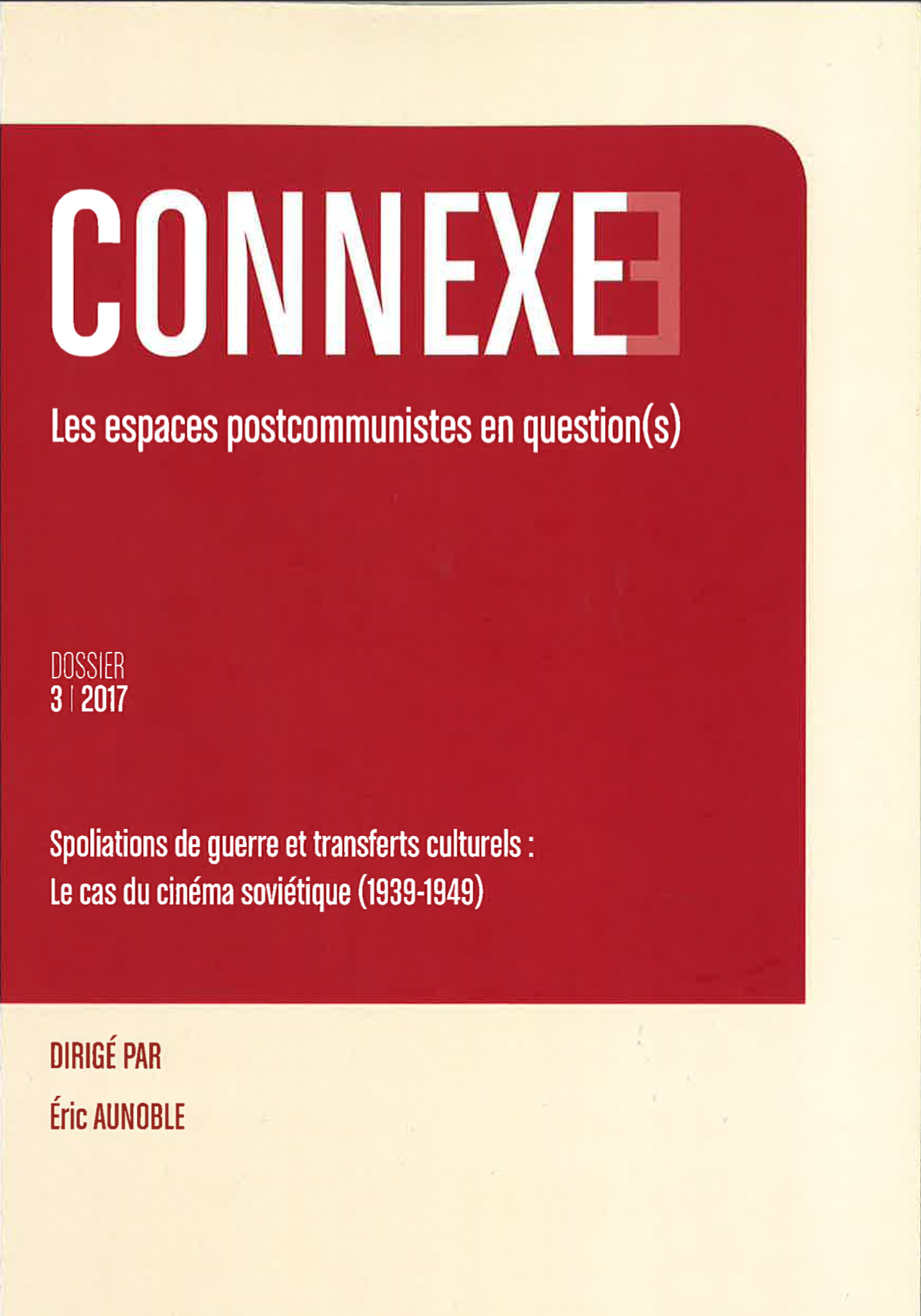Connexe. Les espaces postcommunistes en question(s) est une revue open access qui aborde des problématiques pluridisciplinaires liées aux pays postsoviétiques dans une optique qui allie le passé et le présent. La revue publie un volume par année et accueille différents types de publications : des dossiers thématiques, des articles varias, des recensions ainsi que des articles pour ses rubriques « Champ libre » et « Arrêt sur archives ».
Vol. 3 (2017): Spoliations de guerre et transferts culturels : le cas du cinéma soviétique, 1939-1949

This special issue of Connexe dedicated to “War Spoliations and Cultural Transfers: The Case Study of Soviet Cinema (1939-1949)”, directed by Éric Aunoble, aims to set the history of Soviet cinema during the Second World War in the context of European history and to highlight the issues of transfers and seizures which are better known when concerning other objects, as archives or works of art. This collection of articles is one of the last achievements of the scientific project called Cinema in the Soviet Union at war, 1939-1949.
Sophie Coeuré presents a state of the art based on the historiographical advances related to the films that were looted during World War Two and put it in the context of a broader history of cultural goods during war and post-war periods. Christina Tanis presents with some remarkable archival documents how the 1942 German documentary about the Nazi expedition to Tibet became a Soviet film in 1948 denouncing local theocracy and British imperialism. Juliette Denis & Irina Tcherneva trace the tribulations of “Red Mist”, an anti-Soviet documentary film released in Latvia under Nazi rule on the other side of the Cold War front. Éric Aunoble studies the changing representations of Poland in Soviet movies during the war, linked with the peregrinations and career development of movie makers. Jeremy Hicks tells us how British officials tried to propagandise a positive image of their new eastern ally without giving ground to communist agitprop.
In contributing to the development of the historiography of war spoliation, we hope to shed light on some unknown aspects of cultural exchanges in Europe during the Second World War and to confirm the value of cinema for historical knowledge.



